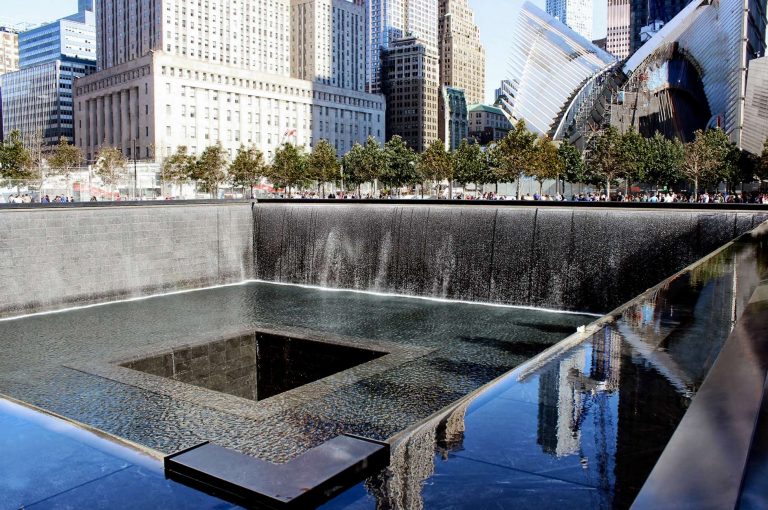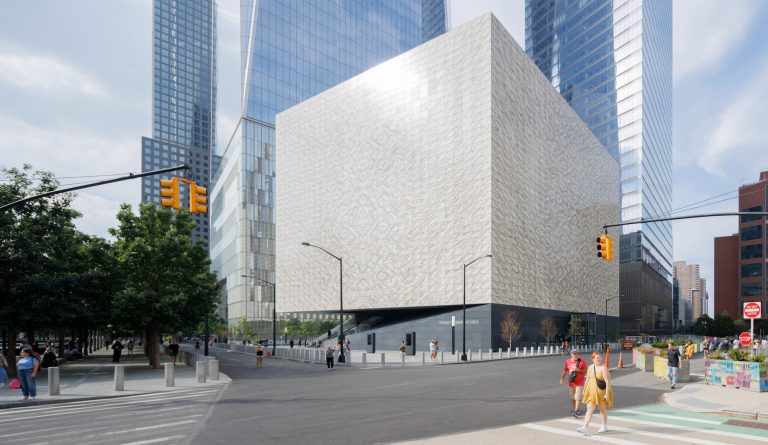There are so many symbols in the thoughtful design of Ground Zero, including the 9/11 Memorial & Museum. But what does it all mean?
The 16-acre 9/11 Memorial occupies the site where the former World Trade Center Complex and Twin Towers once stood. It commemorates the September 11 attacks and honors the thousands of lives lost.
Restoring Ground Zero was an opportunity to not just rebuild, but to create a narrative around the tragedy and heroism of New Yorkers and Americans on 9/11. Through various design elements, the architects of this brand new plaza were able to add deeper meaning throughout the memorial and museum.
Many of these symbols and images are understated — and that’s on purpose. The intricacies of the design aren’t always obvious to an average visitor. That’s why visiting with a guide (like me!) is helpful.
In this post, I’ll explain how the designers and architects rebuilt Ground Zero, some of the meaning behind the design, and symbols to look for when you visit the 9/11 Memorial & Museum.
How the Design Was Chosen

Plans for the memorial were conceived very soon after 9/11. In 2003, an international design competition was held by the Lower Manhattan Development Corporation, a state government agency whose sole purpose was to rebuild the World Trade Center. They received over 5,000 submissions from 63 countries.
Of those, the one that stuck out most was sent in by landscape architects Michael Arad and Peter Walker. They were selected as the winners and their design was brought to life and opened on September 11, 2011.
Symbolic Elements of the 9/11 Memorial

Though it may seem simple in appearance, the 9/11 Memorial incorporates many different elements to strengthen its meaning. Some elements evoke a sense of loss or absence. Others, like the FDNY Memorial Wall pictured above, pay honor to those who lost their lives that day.
Arad felt strongly that the memorial should be a public gathering place — open and spacious — to reflect the way that our country and city came together after the attacks. People of all walks of life would come together at the memorial just as they did in the days following 9/11.
These are all things to keep in mind to help you further appreciate the site.
The Pools
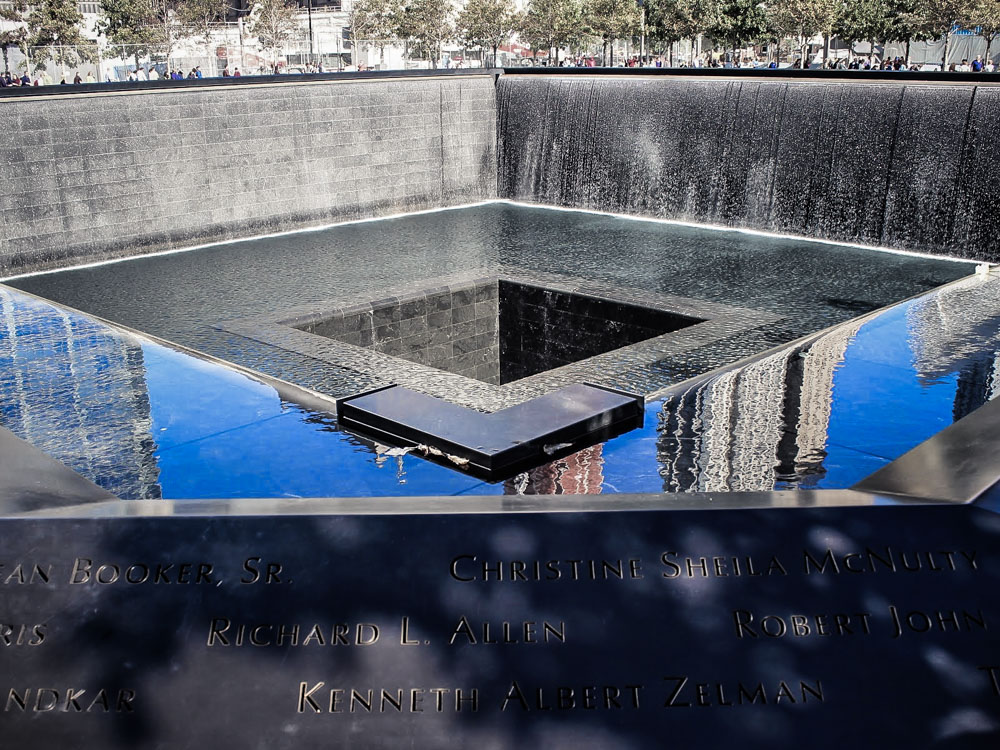
The centerpiece of the memorial plaza are the two pools sitting in the footprint of both the North and South Tower. Continuous running water flows from around the perimeter, on all four sides, cascading down about 30 feet and creating the largest man-made waterfalls in America.
The sound of running water drowns out the nearby traffic and city sounds, giving you a sense of calm. It feels like a sanctuary and a place to think. The water itself flows downward in individual streams but then rejoins the flow at the bottom of the pool. This speaks to the idea of bringing together many separate lives into one, experiences both individual and collective.
In the middle of the pool is a secondary drop, where the water flows down an additional 30 feet. No matter where you stand, it’s impossible to see the bottom. You never know exactly where the water ends up. This reflects the feelings of emptiness when you lose someone you love. The empty space symbolizes both the loss of life and the physical void left by the destruction of the Twin Towers.
Around the pools, engraved in the parapets, are the names of the 2,977 victims of September 11, as well as the six victims of the 1993 bombing of the North Tower.
The placement of names would seem random to some, but rather, it is based on meaningful adjacencies. Rather than be listed alphabetically, the placement of each person’s name is based on their proximity at the time of the attacks and their relationship to adjacent names, such as coworkers or loved ones. That means almost every name is surrounded by people they cared about in some way.
White Roses
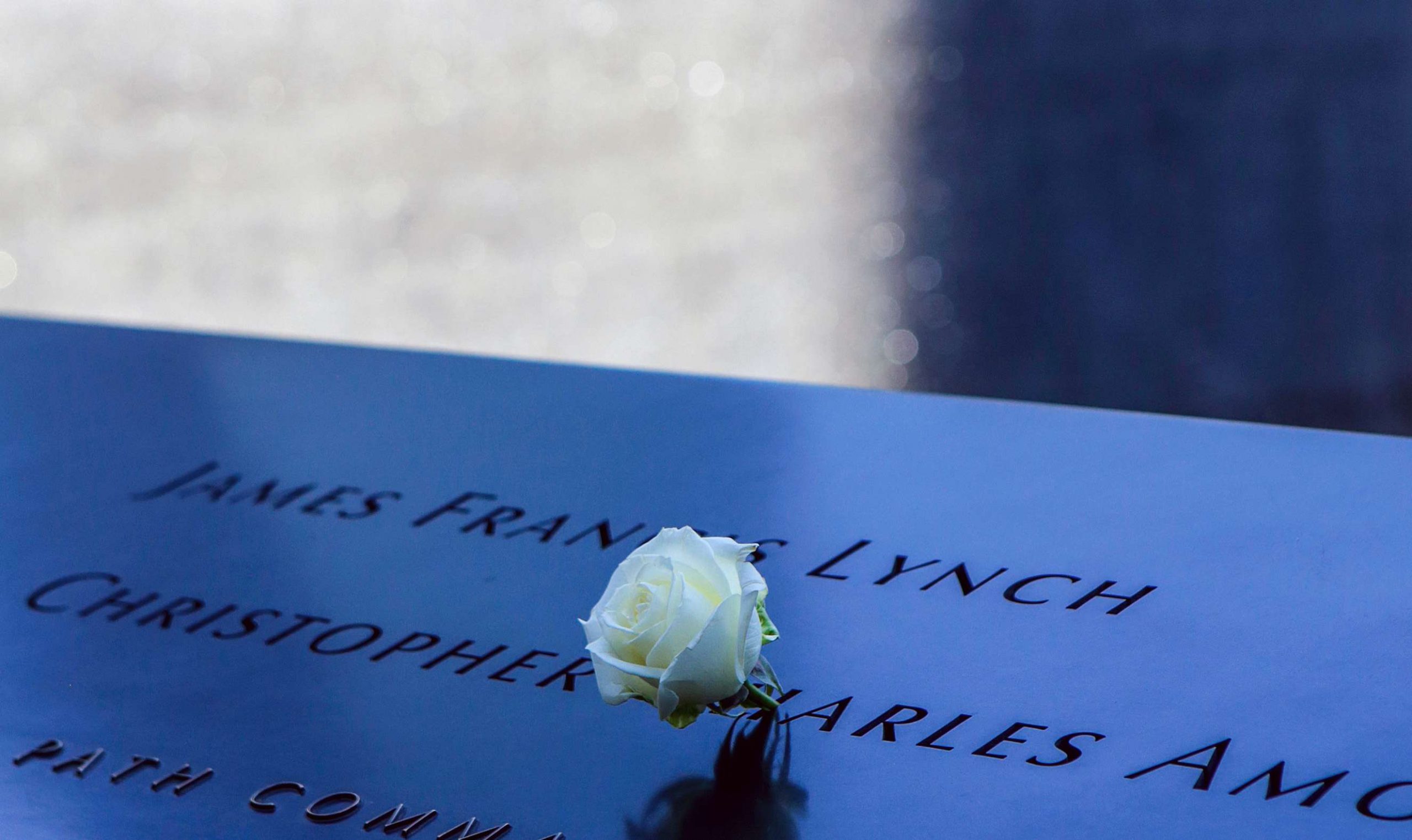
As you walk around the pools, you might see a handful of individual white roses placed in certain names. The rose signifies that today is that person’s birthday. Each one is placed there by staff members during the morning before the memorial opens.
The Trees

Outside of Arad’s pools, Walker planted the surface of the memorial plaza with hundreds of white oak trees. The trees represent life and rebirth. These oak trees, like the memories of 9/11, demand the care and nurturing of those who visit and those who tend them.
They honor many human lives with their own living form and serve as examples of the destruction and renewal of life in their annual cycle of nature. Together with the memorial pools, the result is a living and breathing park.
Why oak trees? The decision to plant swamp white oak trees was due to their durability and changing leaf color. They were all chosen from either a 500-mile radius of the World Trade Center or from areas in Pennsylvania and Washington D.C. that were impacted by 9/11.
The Survivor Tree
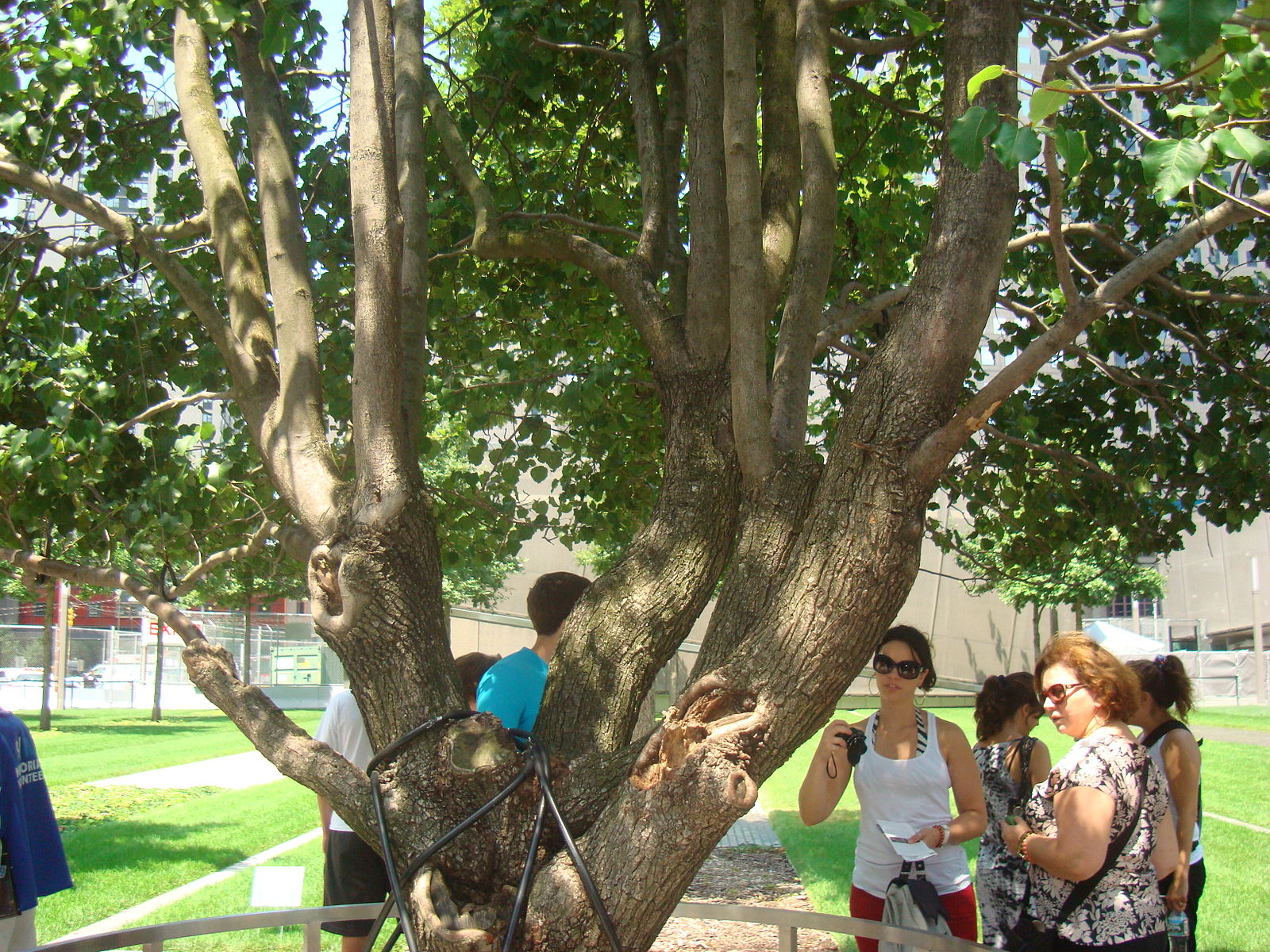
Slightly different from the rest of the trees in the plaza is the Survivor Tree. This callery pear tree was found in the rubble of Ground Zero and miraculously brought back to life. It symbolizes the resilience and strength of the city and reminds us that we can survive even the most difficult of times.
As a further symbol of love and peace, each year the seeds of the tree are donated to three communities that have endured tragedy in recent years.
Koenig’s Sphere
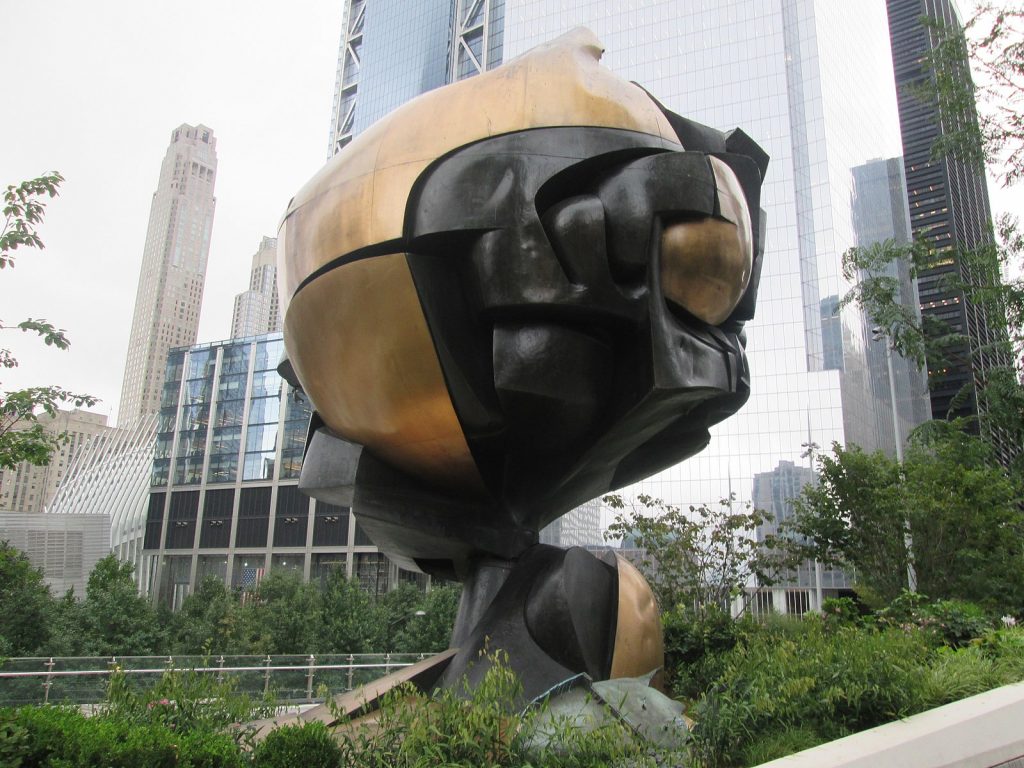
Just outside the memorial plaza you will see a giant sculpture of a sphere, with a large chunk missing from its top. This art piece, designed by Fritz Koening, originally stood in the original World Trade Center Plaza, between the North and South Towers.
The World Trade Center Sphere, sometimes called Koenig’s Sphere, is displayed exactly as it was found in the remains of the World Trade Center — mostly intact, but with some heavy damage throughout.
Its presence is a good reminder to visitors that the peace and beauty found in the memorial is not the only way to remember 9/11. Seeing the damaged sculpture brings back the vivid images of the aftermath of the attacks.
The Freedom Tower

While the memorial and plaza are built to reflect on and remember 9/11, the Freedom Tower (or One World Trade Center) is meant to invoke the idea that our country and our city cannot be defeated.
Nicknamed “Freedom” after one of America’s founding ideals and great promises, the tower stands a total of 1,776 feet tall. This number was chosen specifically to celebrate the birth year of the United States of America.
The top of the building also houses the One World Observatory, with a breathtaking view of Lower Manhattan. Just a block away, across from the memorial, is the Oculus, a shopping mall and transportation hub inside of one of the most unique buildings in the city.
Memorial Glade
The most recent addition to the memorial honors first responders who later got sick or died from inhaling toxins that were present at the World Trade Center site. Since 9/11, that number is now in the tens of thousands.
Along the memorial glade pathway are six large stones jutting outward from the ground, each one containing several pieces of debris from the original World Trade Center. The path follows the location of a temporary ramp that was used by some of these first responders during the cleanup effort.
The Meaning Behind the 9/11 Museum Design
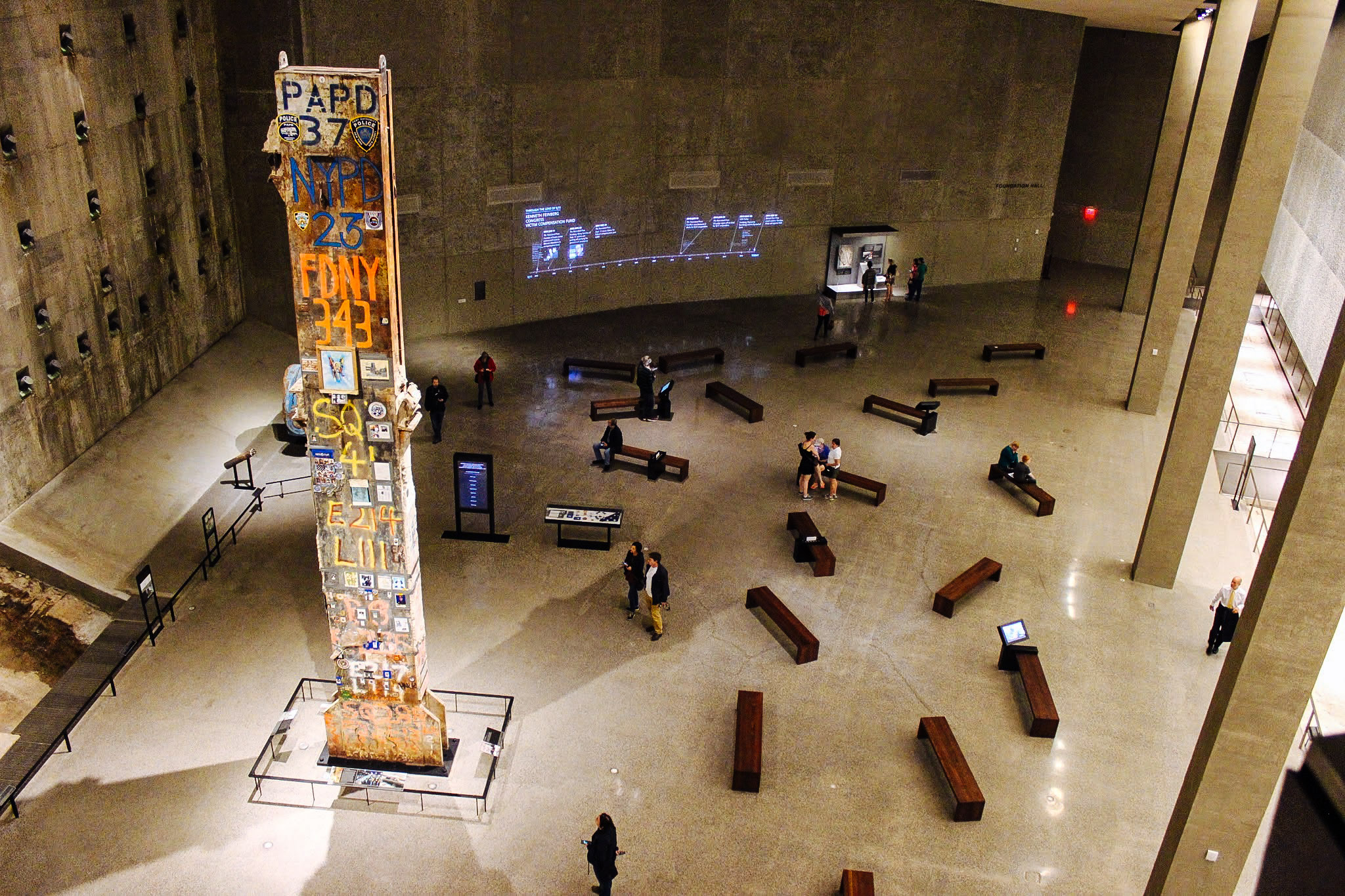
The National September 11 Museum has 110,000 square feet of exhibition space. That space houses artifacts to commemorate the events and victims of 9/11, but the museum itself is a symbol.
Both the building and pavilion were designed by lead architect David Brody Bond and SNØHETTA, an award-winning international architecture and landscape firm.
From outside, the pavilion has a deconstructivism design. What is that exactly? In this case, that means it mirrors the collapsed Twin Towers by resembling a partially collapsed building. This above-ground entrance serves as a bridge between the memory of past events preserved in the 9/11 Museum and the promise of renewal found in the plaza.
Twin Tower Tridents and the Slurry Wall
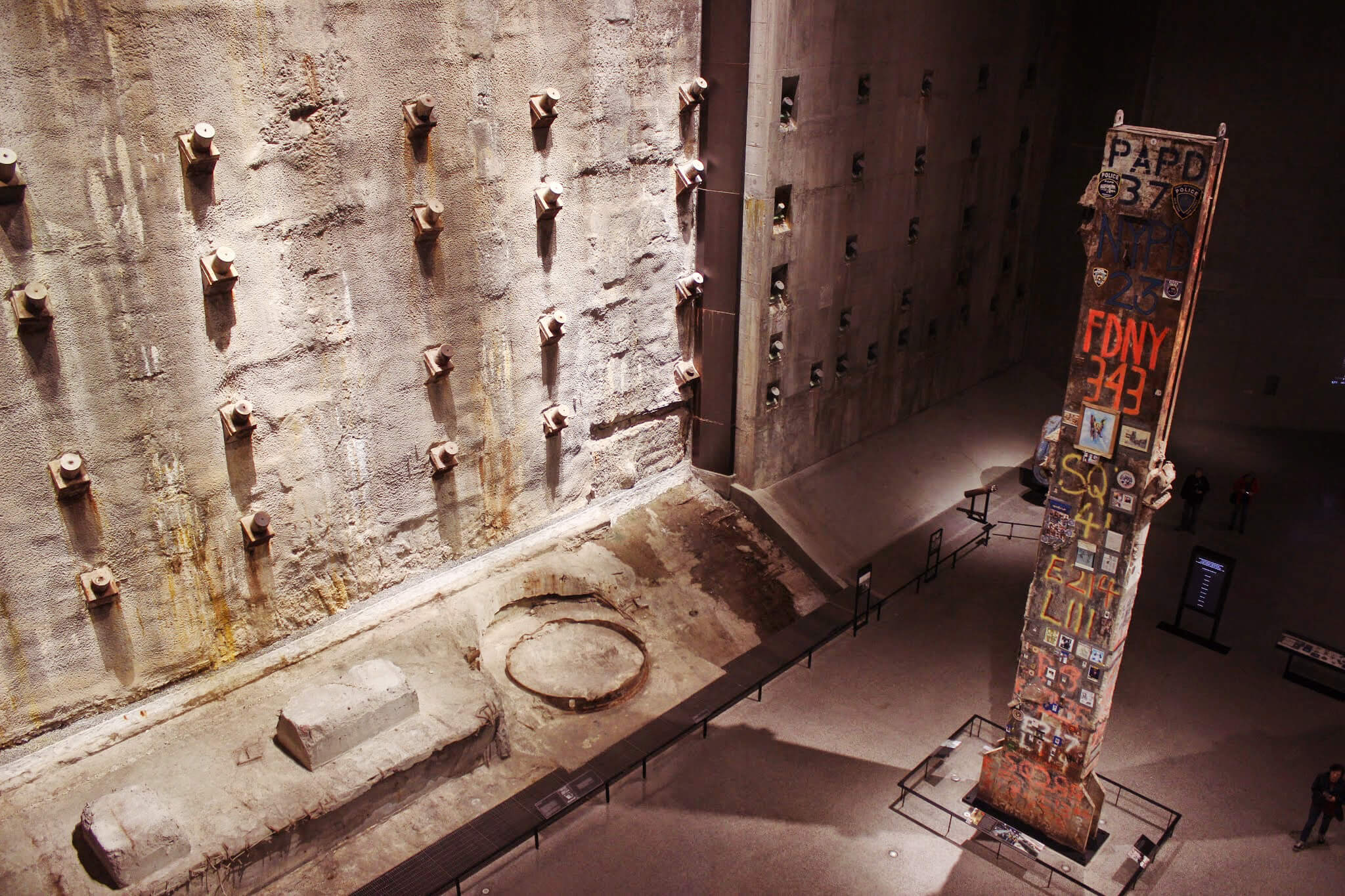
Inside the museum are a number of remnants from the original World Trade Center, including two tridents from the towers. These tridents are from the base of the North Tower – the only two that remained from the dozens that flanked the perimeter of the building.
Part of the museum’s foundation reveals an exposed side of the slurry wall, which was built underneath the North and South Towers in order to retain the water from the Hudson River. Thankfully, the wall remained intact through the attacks.
The Last Column
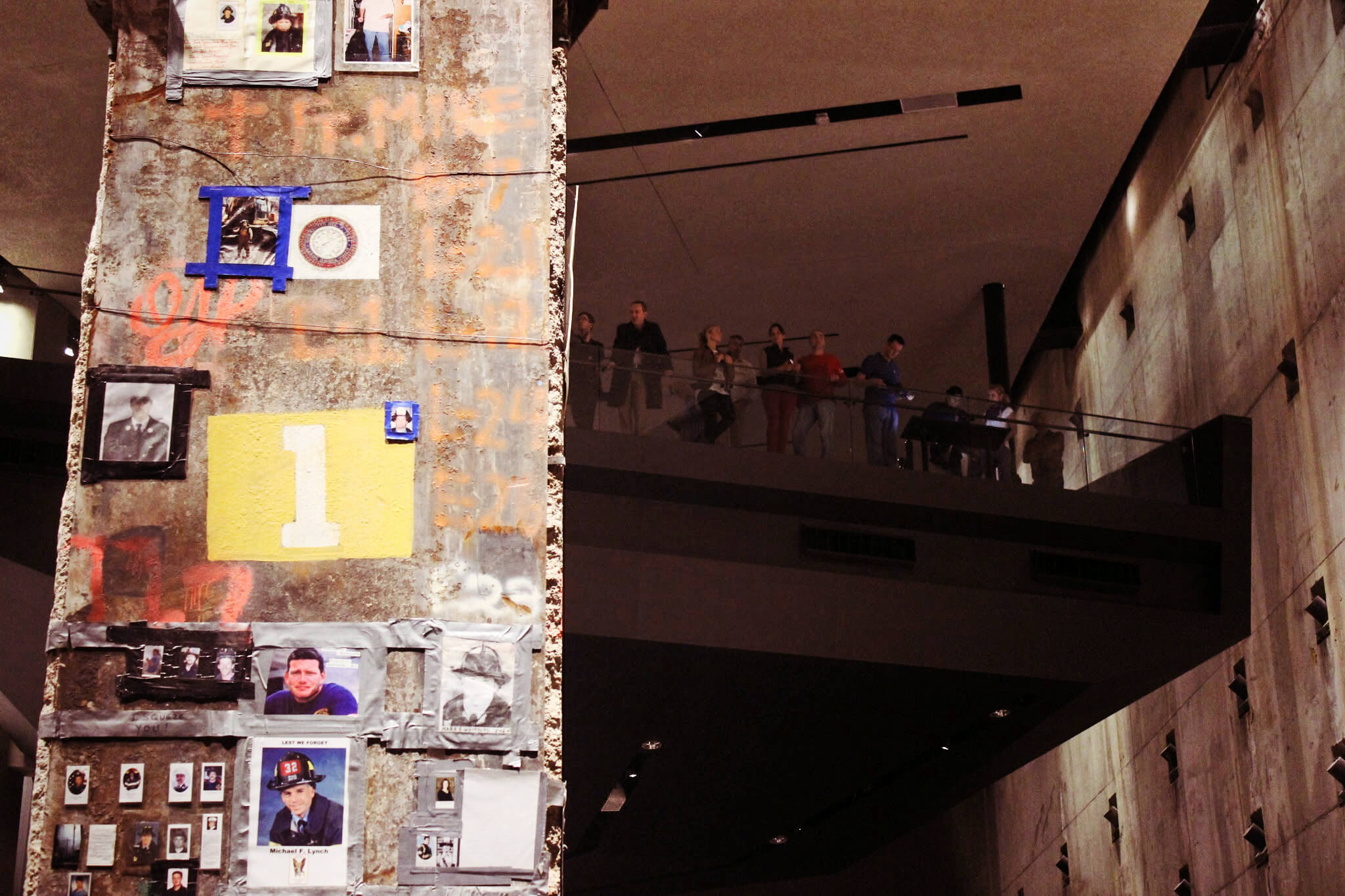
The Slurry Wall stands in Foundation Hall, right across from the Last Column. This piece of World Trade Center Steel was the final one to be removed from Ground Zero.
Rescue and recovery workers covered the column with inscriptions and mementos as they worked to clear the site. It was eventually removed from Ground Zero in May 2002, officially marking the end of the recovery period.
Design of the 9/11 Museum: Ramps
Here’s a design aspect of the 9/11 Museum that few people know the significance of.
Visitors will notice that the descent into the main exhibition is done via a ramp. This recalls many of the various construction ramps often present at the World Trade Center — most notably in the 1960s (to build the original complex) and after 9/11 (to remove wreckage from the site and give family members access).
Meaning Hidden in Plain Sight
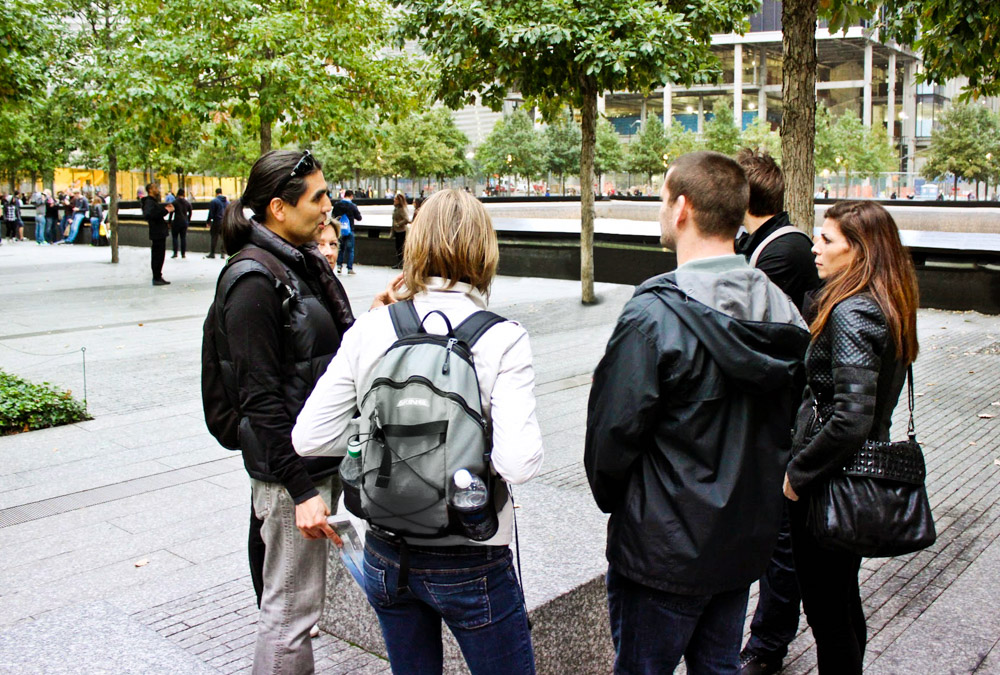
In its powerful, simple design, the 9/11 Memorial symbolizes loss. Yet without reflecting too much on the past, the 9/11 memorial plaza also evokes the future and the memories we still cherish today of loved ones. Overall, the experience is really what you make of it.
Everyone has a memory associated with 9/11, whether it’s watching the TV, hearing about it on the radio or receiving the news from someone else. Visiting the memorial brings you back to that moment while allowing you to reflect. The symbols throughout will take you on a journey, both emotional and narrative. And your guide is there to help along the way.
As a New Yorker with a personal connection to September 11, every Ground Zero tour guide shares their 9/11 story as well as more about the significance of the memorial plaza and nearby sites. Join us for a tour of Ground Zero or learn more about when to visit the 9/11 Memorial & Museum in our travel guide.
